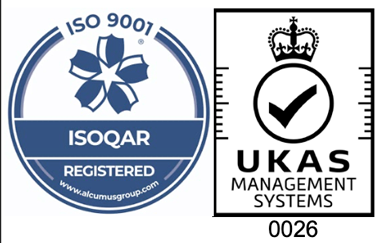The Quality of Rubber: How to Test the Quality of Rubber?
11th September, 2024
The article covers factors affecting rubber quality, like hardness, tensile strength, and abrasion resistance, and testing methods to meet industry standards.
For a rubber manufacturer, ensuring the quality of rubber is crucial, as the performance, safety, and longevity of the final product depend on it. Not to mention, all products must meet certain industry standards, such as the ISO Standard, as well as REACH and RoHS Compliance.
In this article, we will explore the key factors that determine rubber quality, the methods for testing it that ensure the industry standards and certifications are met.
Key factors determining rubber quality
Hardness
Rubber hardness refers to the material’s resistance to deformation. It is measured using the Shore hardness scale, typically Shore A for softer rubbers and Shore D for harder ones.
The right hardness ensures that rubber components provide the desired performance, whether it’s cushioning, sealing, or load-bearing.
Tensile strength
This measures the maximum stress that rubber can withstand while being stretched before breaking.
High tensile strength is crucial for applications requiring durability and elasticity, such as automotive belts, hoses, and gaskets.
Abrasion resistance
Abrasion resistance is a critical factor for rubber used in high-wear applications, such as tires and industrial rollers.
It indicates the rubber’s ability to withstand surface wear caused by friction or mechanical contact.
Compression set
This is the measure of a material’s ability to return to its original thickness after being compressed. A low compression set is desirable for rubber seals and gaskets to maintain a tight seal over time.
Methods for testing rubber quality
Hardness testing
The Shore Durometer test is the most common method for measuring rubber hardness. A durometer gauge is pressed against the rubber surface, and the indentation depth determines the hardness value.
The higher the reading, the harder the rubber. This test is quick and provides consistent results, making it a staple in rubber quality testing.
Tensile strength testing
Tensile testing involves stretching a rubber sample until it breaks. The test measures the force required to break the rubber and the elongation at the break.
By using a tensile testing machine, a rubber manufacturer can gather data on how much stress the rubber can endure before failing. This information is critical for applications that require high durability and flexibility.
Abrasion resistance testing
The abrasion resistance of rubber is commonly measured using the DIN Abrasion test, which involves a rotating drum covered with abrasive material.
A rubber sample is pressed against the rotating drum under a specified force, and the material loss is measured to determine the rubber’s abrasion resistance. This test helps a rubber manufacturer ensure that the rubber will withstand wear and tear in demanding applications, such as tires and conveyor belts.
Compression set testing
Compression set tests measure the permanent deformation of rubber after it has been compressed for a specified period under controlled temperature and pressure.
After releasing the pressure, the rubber’s ability to return to its original thickness is assessed. A rubber manufacturer will perform this test to ensure the material will maintain its shape and effectiveness over time, especially for sealing applications.
Quality rubber from Aquaseal
If you’re looking for products made by a quality rubber manufacturer, trust Aquaseal to deliver. You can browse our selection here.


